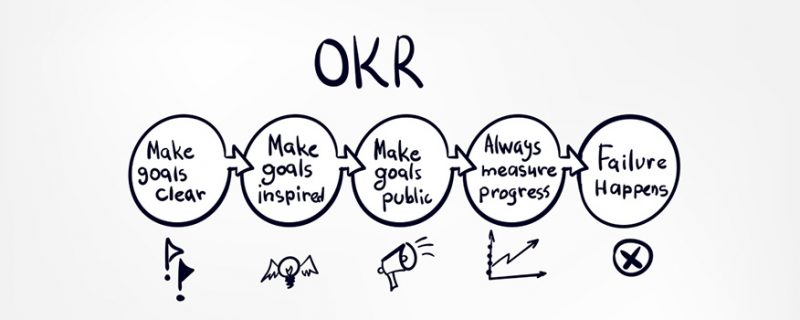
KPIs, KPIs and KPIs. This is exactly the most “obsessed” phrase of all time, not only for employees of departments from HR, sales to marketing, but also for the leadership team when applying KPIs to their employees. .
So do you really understand about KPIs? This article Malu will introduce a complete definition of KPI as well as guide businesses to build a suitable KPI system and most importantly, measure KPI in the most effective way.
What is KPI (Key Performance Indicator)?
KPI stands for Key Performance Indicator is a form of value measurement that determines the effectiveness that a business has achieved towards a particular business goal. Organizations and businesses often use KPIs at many different levels to evaluate their success with a pre-set goal.

In addition, KPIs are also used to compare the effectiveness of businesses and companies in achieving specific goals. Businesses use KPIs for many different levels to measure success and effectiveness. High-level KPIs will focus on general indicators of the whole business, on the contrary, low-level KPIs are used for process systems, employee metrics, departments such as sales, marketing or call centers.
You can completely refer to some other definitions of KPIs from Wikipedia, or Investopedia to better understand this indicator:
What is the importance of KPI in business?
In some cases, businesses apply KPIs without understanding the nature of this indicator. Then, they have to wonder why KPIs do not accurately reflect the actual situation of the business, nor do they bring any positive changes when applied.
One of the most important aspects of KPIs, which are often overlooked when applied by businesses, is communicating the KPIs to all departments in the business. Businesses often focus only on how to set the best KPI numbers that can help them maximize profits, but forget about the need to communicate them to departments in the most specific and clear way.

To be able to propose KPIs to bring the highest efficiency, businesses need to clearly understand the nature of the goal they want to achieve, propose directions and plans to achieve it, and who will implementation of pre-defined plans.
At the same time, the collection and analysis of data, internal and market surveys is a must for businesses to have the most accurate view of their position and goals. Finally, in order for KPIs to be most effective when communicated to departments, senior departments in the business need to set up and build an appropriate internal communication system.
>>> Practical applications of the Boston matrix
How to determine KPIs in the business?
Businesses can completely define KPIs based on their core / most important goals.
- To define a KPI, you should consider following these steps:
- What is your business goal?
- Why is that goal important to your business?
- How do you measure performance during activities?
- What actions need to be taken to effectively impact work performance?
- Who will do the implementation of the work to achieve the set goals?
- How do you know if your business has achieved its goals?
- How can businesses review work in each stage of implementation?

Your business KPIs need to be specific, clear, and measurable, like:
- Sales revenue must increase by 20% over the same period last year.
- In order to achieve the above goal, the enterprise needs to recruit more sales staff to meet the requirements of the business (requirements must be specifically formulated and suitable for the business).
- Goals need to be reviewed on a monthly basis, with specific reports and suggestions for appropriate corrections.
>>> Distinguish two basic models in business: B2B and B2C
What is the SMART KPI model?
Businesses can use the SMART model to evaluate the effectiveness of KPIs:
- Goals need to be specific .
- There must be a specific process of measuring performance to achieve goals (Measure) .
- That goal can be achieved or not (Attainable) .
- Relevance and homogeneity of the above goal with the common goal of the enterprise (Relevant) .
- What is the specific time to achieve the goal (Time-frame) .

The SMART model can also be extended by the SMARTER model, including two new elements, evaluate and reevaluate . These are two particularly important steps, when businesses need to continuously evaluate and review the effectiveness of the set KPI goals, as well as make appropriate adjustments to make the operation run smoothly. out of tune.
>>> An effective SWOT analysis guide
How to build and calculate KPIs
In order to help you have a more specific view in building and setting KPIs, we have systematized the problem, divided into specific steps as follows:
1. Proposing specific goals for KPI
This is the most important step in building and setting KPIs. KPIs need to be directly linked to the core goals of the business.

At the same time, KPIs need to be expressed in intuitive, specific and measurable numbers. It needs to strategically reflect the future goals and activities of the business. Looking at KPIs, one can visualize the business vision and methods and strategies of the enterprise in the future.
2. Share KPIs with stakeholders in the business
KPI will be meaningless if it is not communicated to the stakeholders in the business. Employees of departments, who directly implement and carry out activities, need to be the ones who best grasp and understand the vision and strategy of the company in the future.
But communication is not enough, KPIs need to be expressed in a clear, clear and specific way. You can even consult employees’ suggestions to improve KPIs, making it more effective and realistic in the current context of the business.
>>> Concept of M&A in business
3. Review KPI weekly or monthly
Regularly checking work performance is a necessity to maintain and develop the goals that the business has set.

In fact, not all KPIs set forth by businesses are completely positive for businesses. And only when applied in practice, will you realize the inadequacy of the activities that you have set out before. Therefore, it is necessary to regularly check KPIs.
4. Make sure the KPIs set out are realistic
Your business can apply the following 5 steps to ensure that the KPIs you set are completely in line with business practices:
- Review business goals.
- Analyze business performance.
- Proposing short- and long-term KPIs.
- Discuss your proposal with other departments.
- Review the implementation process and make appropriate adjustments.
5. Adjust KPIs in line with business changes
KPIs need to be regularly updated and adjusted, so that it does not become outdated with the strategy and goals of the business, which must constantly change to adapt to the market.

That is why your business needs to review KPIs every fixed period of time, so that you can promptly add and adjust specific indicators to maximize work performance.
6. Check if the proposed KPI is doable or not
If the KPI proposal cannot be implemented by the enterprise for many reasons (such as insufficient resources, the challenge comes from the market is too big, etc.), the effect that the KPI brings will not really be as desired by the company. enterprise. If the proposed KPI is lower than the actual capacity, the enterprise may completely miss many opportunities for breakthroughs in the future.
Therefore, calculating KPI with high feasibility is an extremely important thing, deciding the development of the business in the future. You can completely use additional tools to define KPIs exactly like Google Analytics.
>>> Google Analytics User Manual
Use additional tools for setting KPI
Obviously, the effectiveness that KPIs bring to businesses is indisputable. We can completely use effective assistants to manage and measure work performance.

Here are specific steps to help you use KPIs for your performance management:
1. Align business strategy
You need to go through the process of converting qualitative strategies into measurable indicators, thereby clearly identifying which strategies are most important, and need the most focus for future implementation, and arrange them in clear order.
2. Covering the necessary aspects
Business activities always come with trade-offs.
Your business cannot cover all aspects of your business. As the production of a good and quality product cannot go hand in hand with a cheap price.
One method that can help you determine the areas you need to focus on is the Balanced Scorecard ( BSC ). Through this theory, your business will determine what aspects you need to trade off in order to achieve the goals you proposed earlier. The four aspects you need to pay attention to here are:
- Financial aspect.
- Customer aspect.
- Aspects of internal business processes.
- The learning and growth aspect of the business.
3. Applying BSC strategy to OKRs in practice
The BSC tool can help businesses identify the areas they need to focus on, thereby helping to set goals, measurement methods (KPIs), and methods of implementing goals in the business. To apply theory into practice, you can refer to the OKR method .

This method is widely used in many large enterprises, notably Google, for the purpose of setting, tracking and monitoring goals and actual work performance.
4. Use KPI dashboard to monitor work efficiency
After determining specific goals and methods of implementing goals, businesses need a visual tool that can monitor work efficiency, detect problems that arise and make necessary corrections when misalignment system.
KPI dashboard will provide businesses with indicators that are visually displayed in real time.
Key KPIs for sales management
Sales managers sometimes encounter confusion and problems in their work. Without real numbers, it will be difficult for them to capture the current state of sales, and come up with specific strategies to help the sales team operate effectively.

Instead of relying on ears and eyes, relying on judgment, relying on numbers will help them make more rational decisions. Important KPIs in Sales include
- Number of new contacts (New Leads/Opportunities)
- Client Acquisition Rates (Client Acquisition Rates)
- Sales Volume by Location
- Competitor Pricing
- Existing Client Engagement
- Employee Satisfaction (Employee Satisfaction)
- Net Promoter Score (NPS)
1. Number of new contacts
This is an important KPI that managers need to regularly capture. The number of samples arrived in the last week/month, has the sales team contacted them all, what is the conversion rate, did the numbers increase or decrease compared to the previous week? What is the reason for this decrease?
In addition, capturing this index also helps management to allocate a reasonable number of employees to their staff, if the sample is too small, it is necessary to immediately contact the marketing team for timely solutions. time.
2. Cost ratio to acquire new customers
Another KPI that needs to be measured is the percentage of costs it takes to acquire new customers. Use this ratio to tailor your approach when communicating with customers. Is your sales process good? Sales team to learn about potential customers before contact or not? Is the current form of contact good (face-to-face meeting, telesale, email, …)

In addition, this metric also helps the team leader to know which employees have good performance by comparing the conversion rates between employees.
If the difference in conversion rates is short-lived, it could be due to an uneven distribution of quality contacts, which is fine. But if it happens continuously, then the problem lies with the other salesperson.
3. Sales by location
By comparing sales by location, including offline stores and online transactions, managers will see where the demand is greatest, and where the lowest, and then explain why. this difference.
If sales in area A are very low, possibly due to low demand there, you can consider relocating the store elsewhere. Also, if there are 2 locations with similar sales and January, try applying the promotion in February and then change direction in March to see which location brings in a good source of revenue.
4. Competitor’s price
Although management and owners should not monitor every move of competitors, they should also have some concern about the price of competitors’ products because it will create competitive strategies. forward.
By constantly comparing your prices with those of your competitors, you also know when is a great time to launch promotions, to attract customers more effectively.
5. Current customer engagement
Maintaining a good relationship with the customer after the sale has closed is extremely important for long-term business growth. By keeping in regular contact with the customer, and whether there is any help if there are difficulties in using the service, the seller will build trust and affection.

Customers will always know that, at this company, there is always someone to support them when needed. You need to ask your employees to schedule re-contact with old customers, to ensure that customers will not forget your brand and switch to using competitors’ products.
6. Employee Satisfaction
Working in sales requires perseverance, but sometimes your employees feel discouraged. So as a manager, it is necessary to create motivation and joy in working with them.
Ask yourself, are your employees part of a team? Do they agree with the sales process being used? Collecting employee feedback is essential. Although this KPI is quite difficult to evaluate, because it is emotional in nature. However, ask your employees to rate their job satisfaction on a certain scale, and answer questions to better understand what makes them feel happy and unhappy. happiness.
7. Customer Satisfaction Measurement Index
The last important KPI is a measure of customer satisfaction with your products and services.
You can ask customers to fill out small surveys to rate their satisfaction on a scale of 0-10. The grades can be divided as follows:
- (9-10): Customers really like you. This audience will open up new potential customers for you by referring you to their friends, family, and careers.
- (7-8): They are relatively satisfied with your products and services. But just stop there.
- (0-6): They seem to have a neutral attitude, neither like nor hate, or maybe absolutely hate you because of the bad experience they’ve had with the product or service.

Send this customer satisfaction survey regularly, but for new customers also be careful not to send them too soon. A reasonable time to send that is from 3-6 months depending on your industry, the speed with which new products are released to replace old products, etc.
Rate the ratio between those who hate, those who satisfy, and those who like you. Is there a way to reduce the percentage of people from 0-6 points and increase those from 7-10 points?
Once you’ve mastered the key KPIs above, analyze them carefully to gain a better understanding of the current state of operations. Then come up with new improvements to be able to develop.
Some common KPI terms:
1. KRI (Key risk indicator): Is an index used to measure risk in deployment activities. This indicator is often used to warn the level of risk in many different levels in the business.
2. CSF (Critical success factor): Is a term to refer to the necessary factors to help businesses achieve the goals set out in advance.
3. Performance metrics: Used to measure the efficiency and behavior of individuals operating in the business. For example, employees working in a customer service center can measure their performance based on a number of criteria such as: Number of customer calls answered, average waiting time to receive calls. calls, the number of successfully received requests, the average duration of each call, etc.
10 things to keep in mind when building KPIs:
Here are 10 things you need to keep in mind when building KPIs for your business or organization:
- Set KPIs based on the number of people affected by that metric.
- Indicators must be objective and not based on subjective opinions.
- Rooted in strategy and focused on improvement.
- Well defined, simple and easy to understand.
- Be related with a clear goal.
- Need to be consistent (for future maintenance and improvement)
- It should be specific and directly related to a specific goal.
- In line with business practice, highly feasible.
- Provide timely and accurate feedback.
- Accurately reflect the business process of the business, should consult with stakeholders.




